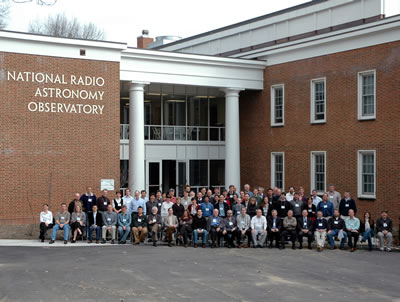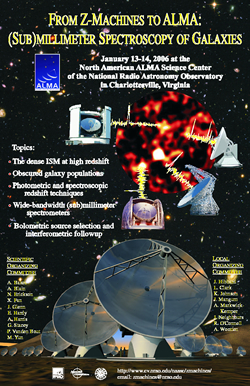Abstract Detail
14 January, 2006 - 11:25 AM CO(1-0) emission from QSO host galaxies beyond redshift 4Dominik A. Riechers (MPIA Heidelberg), Fabian Walter (MPIA Heidelberg), Christopher L. Carilli (NRAO Socorro), Kirsten K. Knudsen (MPIA Heidelberg), K. Y. Lo (NRAO Charlottesville), Dominic J. Benford (NASA/GSFC), Johannes G. Staguhn (NASA/GSFC), Todd R. Molecular gas has now been detected in 15 z > 2 QSOs through observations of high-J CO transitions using millimeter interferometers. Observations of the CO ground-state transition, CO(1-0), however, have the potential to trace the molecular gas at lower excitations which may give a better estimate of the total molecular gas content in high-z QSOs. Here we present first z > 4 CO(1-0) observations obtained with the NRAO Green Bank Telescope (GBT) and the MPIfR Effelsberg telescope. Utilizing the K band receivers of these two 100m class radio telescopes, we detect the CO(1-0) transition in the high-redshift QSOs BR 1202-0725 (z = 4.7), PSS J2322+1944 (z = 4.1), and APM 08279+5255 (z = 3.9). The spectral capabilities of the GBT (1 × 200 MHz in high-resolution mode, 2 × 800 MHz in high-bandwidth mode) allow us to cover velocity ranges of up to 20000 km s-1, or Δ z/z = 0.09 at z = 4, which will be imperative for future high-z studies in galaxies with known strong dust continuum, but poorly constrained redshift. This is a first step towards observations with future z-machines. From our observations out to z = 4.7, we find that the CO/FIR luminosity ratios of our high-z sources follow the same trend as seen for low-z galaxies. We also derive that CO emission from all observed transitions can be described by a single gas component and that all molecular gas appears to be concentrated in a compact nuclear region. Download presentation
| |






